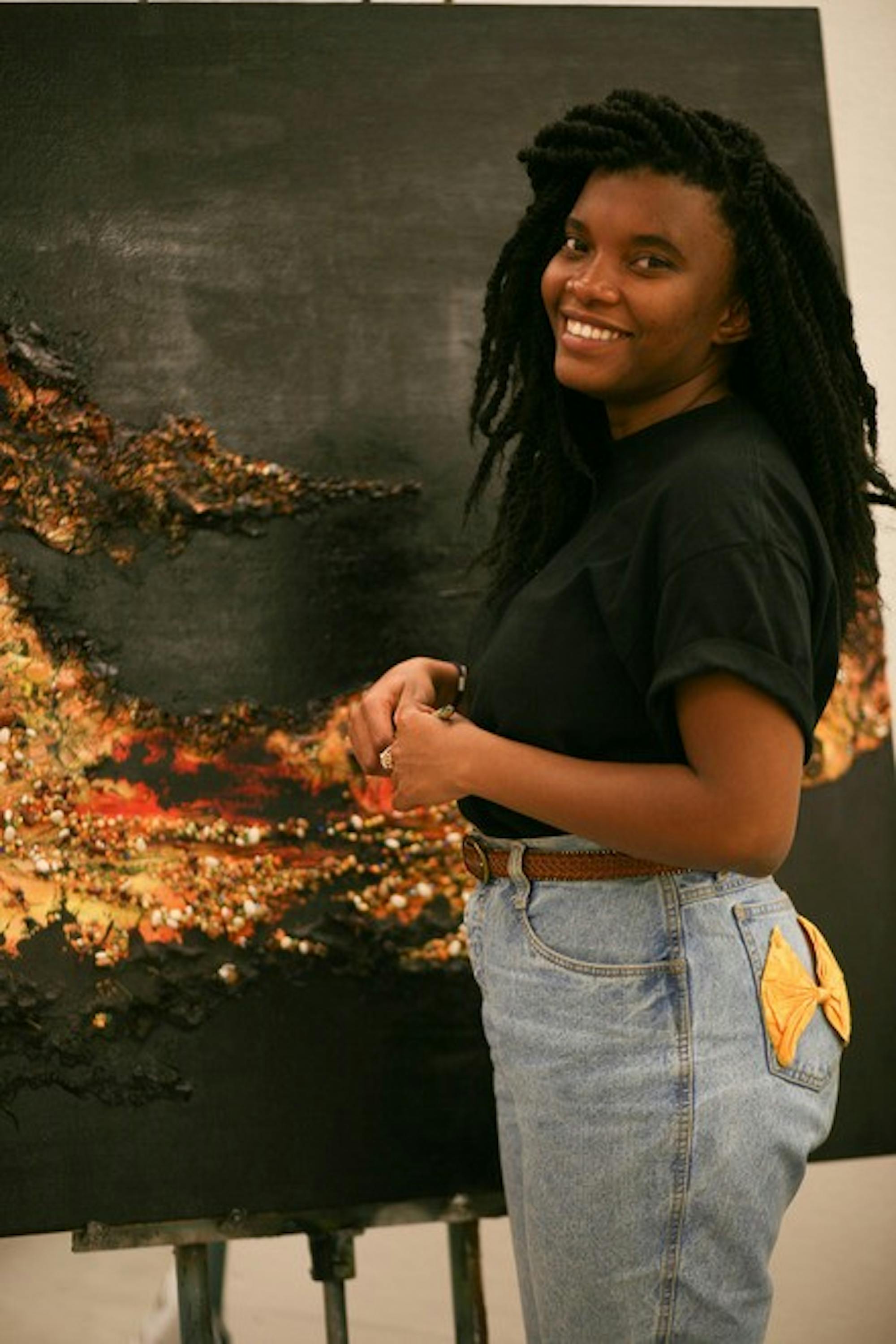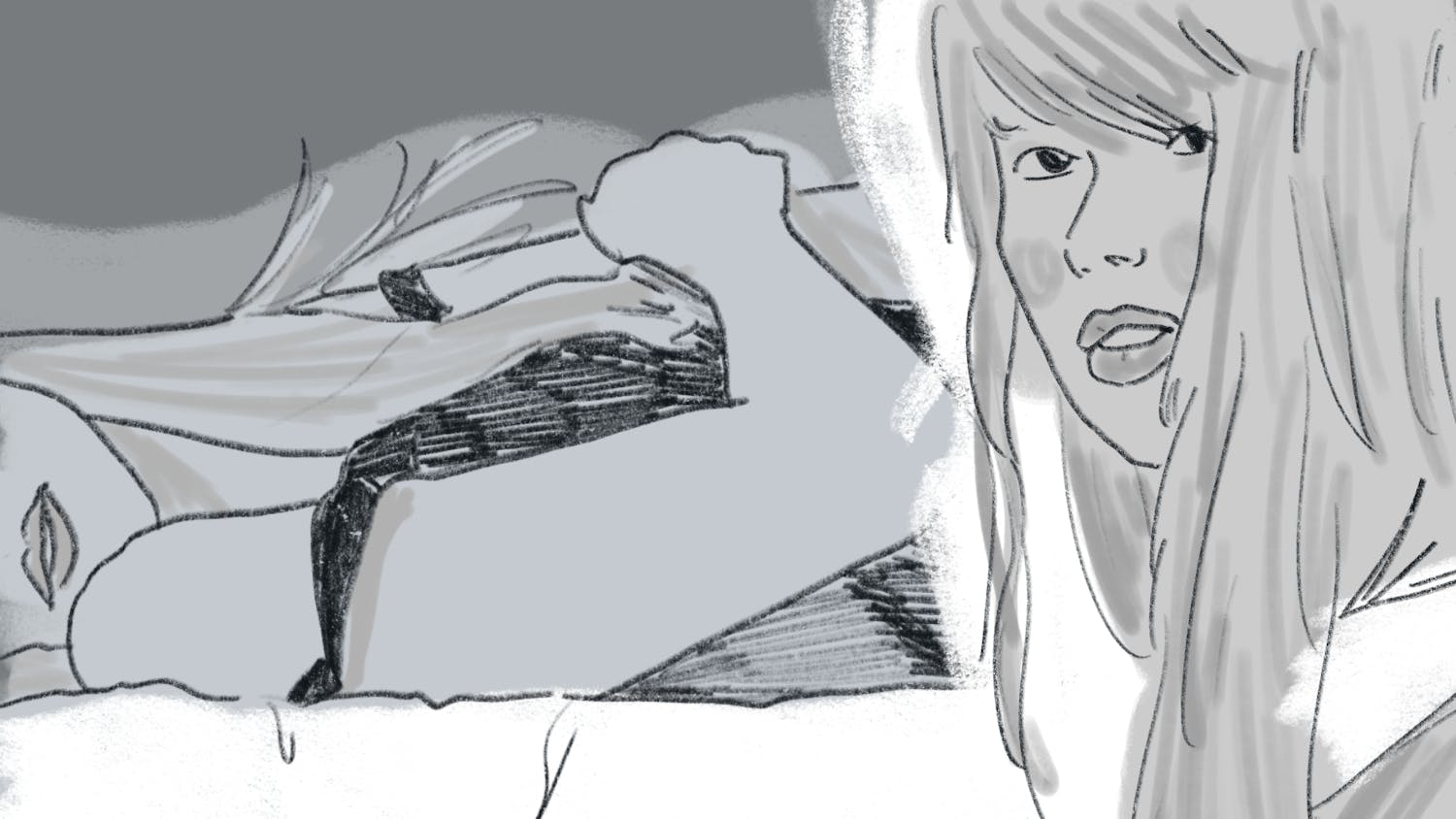Yegela's exhibit, "How to Not Hate White People," is currently displayed in the Barrows rotunda, where it will stay for four weeks.
The installation allowed Yegela to combine different mediums including construction, painting and fabric work. A large crate box with door hinges and a window is padded on the interior with soft cushion, giving it the appearance of a home.
While a modest construction of wood and fabric, Yegela's work conveys a moving message about the struggles of the African-American community.
The piece's strength lies in its combination of simple materials and forms that carry heavy visual association with powerful weighty experiences, fellow studio art intern Luca Molnar '13 noted.
In the text accompanying her work, Yegela quotes a poem, "You broke the ocean in half to get here, to be here, only to meet nothing that wants you." She recalled others' perception of her in the United States as a person of color, but as an American while at home in Tanzania.
Yegela's frustration was exacerbated during the George Zimmerman trial this summer. Rather than allowing her anger to create a cycle of hatred, Yegela wanted to project the struggles for people of color in a constructive way.
"I needed to find a way to project these feelings and to classify them, to put my emotions into one installation piece," she said.
Feeling out of place both in Tanzania and America, Yegela designed "How to Not Hate White People" to represent the process of making a home.
"The box symbolizes the movement of finding a place accepting of who I am," she said.
The soft cushioning of the inside of the crate exemplifies the search for comfort and the transformation of an ordinatry and transient crate into something beautiful.
"I have found that much of Sabrina's work deals with personal experience, but also broader theoretical frameworks, for looking at issues of race, cultural isolation, emigration and immigration and geographical context," Molnar said. "I think this piece comes from a personal space and out of these ideas."
Designing the exhibit turned out to be the easy part of the process. Transporting and erecting the heavy crate proved the real challenge, but Yegela felt that the call to action present in her exhibit made the effort worthwhile.
"There is a lot of ignorance on campus I usually feel compelled to fight against," she said. " I want people to be aware of their white privilege. There are not a lot of people asking how they can improve the situation."
Yegela said she is aware of her bold design choices in the piece's strong message to the controversial title.
"I think art encourages the human mind to think outside the daily menial tasks and push philosophical boundaries and discuss difficult topics ordinarily avoided in daily conversation," studio art intern Alexandra Campbell '13 said, adding that "Sabrina's work forces you to be aware of the existence of the world outside of Dartmouth."
Yegela sent out announcement cards depicting Miley Cyrus twerking overlaid with an image of Martin Luther King, Jr., in an effort to draw attention to racism.
"When you look at it, it feels wrong and that's what I wanted to portray," Yegela said.




